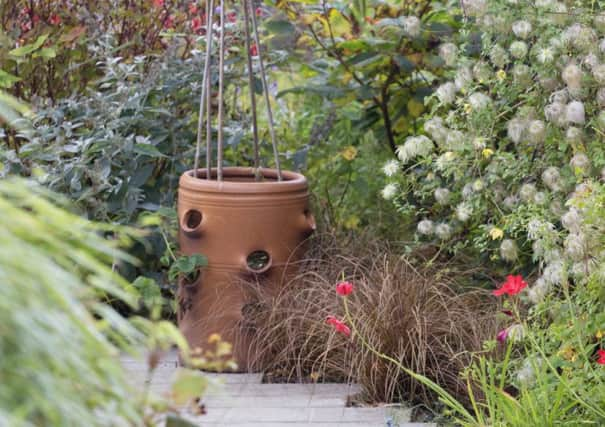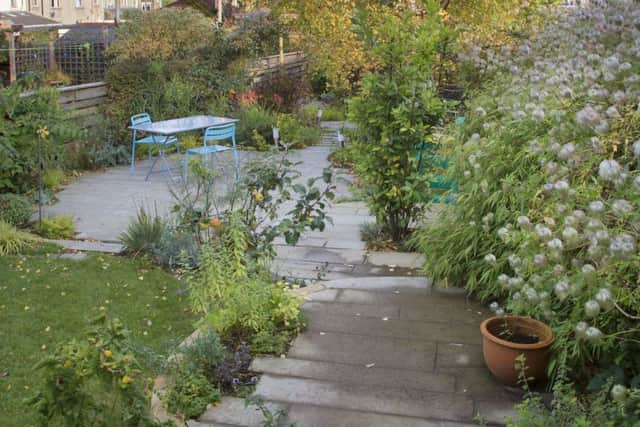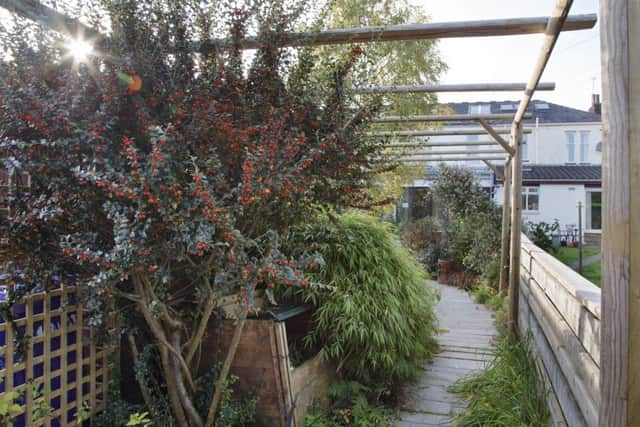How a Glasgow hotch potch became a beautiful garden


IT WAS a garden that embarrassed its owners, who could not face showing it to their friends. What they wanted was a space they could be proud of, but which involved making use of what was already there.
They wanted it to be ecologically sound and to meet their young family’s needs, yet to do this it had to be a completely new garden. Was it possible?
Advertisement
Hide AdAdvertisement
Hide AdThe suburban garden in Jordanhill, Glasgow, is 25m long by 8m wide. It was a hotch potch of uneven concrete slabs, though the planting was good, with many mature shrubs and trees. The couple work full-time and knew what they wanted to achieve but, with small children and their jobs, just couldn’t spare the time. It was important to them not to throw out the materials already in the garden, only to bring more in. Luckily, they found a designer who feels the same way: Dug Macleod, who with Stone Wood Water Light creates new-from-old gardens by working sustainably and reusing materials.


Everything that was in the garden is still there, even the plastic play house that now has a “green roof”. Early on in the project various plants were set aside as the site was excavated. These included kaffir lilies, a plant too good to throw away despite beiWng heavily infested with couch grass. They hung around all through the work until eventually finding a new home on the play house, with other plants. “The lilies are doing well, and the couch grass is struggling,” says Dug.
The green roof is typical of his approach to design, where elements of the garden feed off each other to take on a new form. “I realised the Wendy house roof was ridged and has a moisture-retaining profile. The roof was already waterproof plastic and green roofs have to incorporate this. All I had to do was put on a timber frame, and then it was planted with periwinkle, strawberries and the kaffir lilies.”
The slabs from the old patio were re-used to form a series of large round steps. All the other paving: the main patio, cobble-style path and mini-patio under the pergola beside the garage were uneven, but they were sanded and cut by Dug’s colleague Nicholas Denney. He then polished the concrete which brought out some of the crystals in the concrete. Once they were laid properly the effect was one of new, bespoke paving.
The higher level at the top of the garden leads on from the kitchen, and the three rounded steps, which can be used as mini-patios, cascade down one side and lead to a secret woodland pathway. A round lawn now sits where the previous slabs were.


All the materials have come from other areas of the garden. The hardcore needed for the steps was found under the existing soil. An old sandpit provided sand for plants that need free-draining soil. “Bit by bit we found the materials,” says Dug.
He built monkey bars from larch timber and copper pipes, better suited to a child’s grasp, and a ladder frame and mini-pergola is set at small-people height, to keep adults out. Climbing plants on the monkey bars also give the frame a concealed appearance.
Bushy plants like buddleja and bamboo create a forest feel, which was important for the children’s father, who wanted a woodland element, taking its lead from a mature birch tree that is the main plant focal point. The planting is therefore naturalistic on the edges and certain plants are allowed to be a bit bushier to create dens and increase privacy. Sand and cement, blocks for the walls of the circles, and turf were the only materials brought in to the garden. The only thing that was removed from site was old sandstone paving from beneath the soil. It has been re-used in another of Dug’s gardens.
Advertisement
Hide AdAdvertisement
Hide AdThe couple moved into the house four years ago and renovated it, but the garden was too much work for them to take on. Having renovated the house to be ecological, they wanted the same principle for the garden, and didn’t want it all to be pulled out. The odd fruit bush inspired a desire to grow more food and the couple have increased their repertoire to include radishes, chard, beetroot, strawberries and gooseberries. Herbs are planted along the edges of the circles, creating a mini kitchen garden. Other plants have been chosen for their medicinal or wildlife-friendly benefits.


As keen cyclists, they also wanted easy storage and access for bikes. Other practical elements to the garden include a retractable washing line. The family hadn’t anticipated the transformative effect the garden would have. They now eat outside and the children play out a lot more. The connection between the house and garden was something Dug wanted to achieve, bringing the level up to the kitchen doors whereas before, the steps had provided something of a barrier. “You could never have guessed where they have come from,” says the owner of the reborn paving. “We had no expectation it would be like that, with all the paving and plants being reused in a new way.”
The wildlife that has been encouraged into the garden includes field mice and a frog, the latter drawn by the tiniest of ponds – made by father and daughter from a wash basin. It’s surprisingly effective at encouraging wildlife and fits perfectly with the family’s philosophy of reuse. Rather than laying a large pond with liner, pumps and need for maintenance, this pond meets the objectives of attracting wildlife and of pleasing the children.
The couple’s desire to be environmentally friendly and grow their own food was all well and good, but with work and family commitments, the aim would be undermined by getting someone in to remove it all and replace it with new materials. Instead, they got help repurposing and recycling the garden, and are able to get cracking with The Good Life. n
• For more on Stone Wood Water Light see www.dugdigs.co.uk